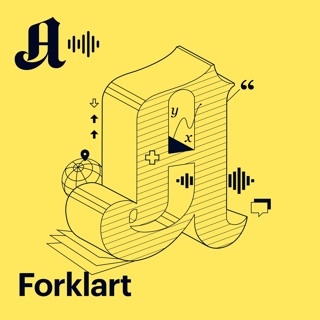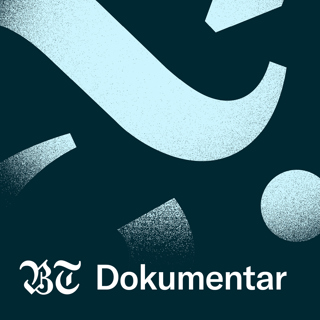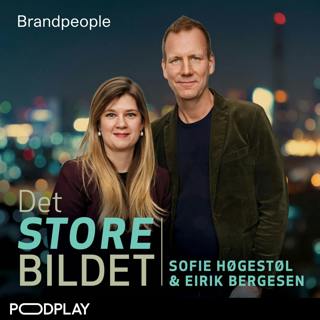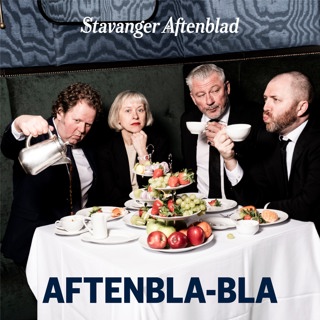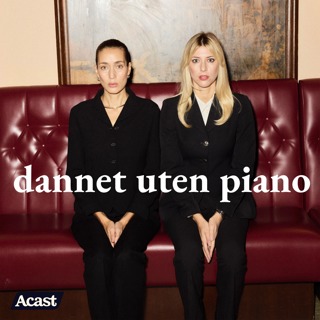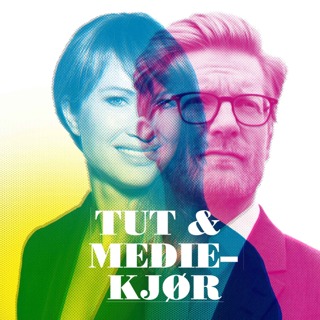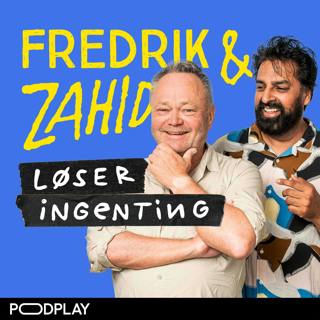
Transforming Fashion: Adidas x Audi, Nike x Kerr, and the Rise of Sustainable Textile Recycling
The global fashion industry is experiencing notable shifts this week, driven by major deals, evolving consumer trends, new regulations, and innovative launches. Among the biggest developments, Adidas has just announced a multi-year partnership with Audi’s new Formula One team. Adidas will design exclusive high-performance apparel which will debut ahead of the 2026 season, signaling a strategic pivot towards high-profile sports partnerships and aiming for boosted worldwide exposure. This marks Adidas’s second major F1 apparel deal and highlights a competitive landscape where big brands are vying for unique platforms to increase visibility and consumer engagement.On the product front, Nike has launched the Sam Kerr signature boot and collection, blending performance and lifestyle with unique personal details. Calvin Klein rolled out its Fall 2025 underwear line with pop star Rosalía as the campaign face, emphasizing seamless technology and elevated basics. Meanwhile, brands like Madewell and Popilush are leaning into leather and suede, responding to rising demand for both traditional and bold seasonal looks.Sustainability and regulation are also catching headlines. France has finalized a new textile environmental labeling law that takes effect in October, requiring fashion labels to display environmental cost data. This regulatory step is part of a broader push towards transparency and circularity, reflected in a new forecast that predicts the global textile recycling market could surpass $11.8 billion by 2030, as demand for sustainable materials and verified green claims accelerates.Established leaders continue to show resilience amid change. After the recent death of Giorgio Armani, the company confirmed that both Emporio Armani and Giorgio Armani runway shows will proceed during Milan Fashion Week, emphasizing continuity and commitment to legacy even in times of transition.Policy uncertainty remains a concern, with major apparel sourcing countries warning of increased costs and operational difficulty tied to fluctuating international regulations and tariffs. In the US and Europe, prices for seasonal collections are largely steady, but retailers are closely watching consumer spending habits as economic uncertainty lingers, with many favoring investment pieces and versatile wardrobe staples.In summary, this week’s fashion market shows brands aggressively targeting new partnerships, adapting to regulation, and responding to shifting consumer values, all while maintaining focus on innovation and sustainable growth.For great deals today, check out https://amzn.to/44ci4hQThis content was created in partnership and with the help of Artificial Intelligence AI
11 Sep 2min

Fashion's Rebound: Sustainability, Collaborations, and Shifting Consumer Trends
The global fashion industry has seen notable shifts in the past 48 hours, marked by high-profile collaborations, emergent trends, and strategic alliances reflecting efforts to bounce back from earlier market instability and supply chain bottlenecks. Fresh from New York and Paris, trade fairs and Fashion Week showcases highlight the sector’s renewed emphasis on sustainability, traceability, and innovation, which are now driving consumer attention and spending.New launches such as the Lexus x Malbon golf-inspired clothing line in New York are expanding the intersection between luxury and street fashion, targeting younger, affluent consumers who value both authenticity and technical fabrics. The launch event at Hypegolf Clubhouse on September 3 drew large crowds and active social engagement, signaling pent-up demand for exclusive cross-brand collaborations and limited runs.In Paris, the Who’s Next exhibition is actively reinventing itself by merging ready-to-wear, accessories, and jewelry sectors under one roof. There is a visible push for innovation, particularly in areas like 3D printing and sentiment-driven jewelry, bolstered by financial support from organizations like FranceEclat. Data shows this model is attracting new entrants and widening access for niche brands, as evidenced by subsidized participation and increased buyer traffic. The concept store format and investor networking events are drawing attention, especially from digitally-native startups seeking fresh capital.Strategic partnerships also remain strong. Argyle Haus has joined forces with Global Capital Network, delivering increased investor access and tailored pitch support for emerging American-made fashion brands. This is partly in response to heightened competition from brands that blend style, durability, and eco-friendly positioning—a trend confirmed by Amazon sentiment data showing a projected annual rise of up to 20 percent for sustainable outerwear categories.Major licensing deals stretch across continents, with PUMA renewing a sportswear partnership with Manchester City, New Era Cap expanding with athlete Josh Allen, and Wrangler securing a multi-year agreement with Genesco. These moves indicate that established players are reinforcing market positions amid surging interest from new competitors.Consumer behavior continues to shift towards versatile, sustainable, and personalized products. Cropped puffer jackets and quilted outerwear are trending not only on runways but also in sales spikes and social buzz. Lastly, supply chain stability is slowly improving, although brands remain cautious, prioritizing flexibility and seasonally adaptive designs to mitigate ongoing disruptions. Compared to previous months, the current outlook is more positive, with innovation, partnerships, and direct-to-consumer connections seen as key levers for growth.For great deals today, check out https://amzn.to/44ci4hQThis content was created in partnership and with the help of Artificial Intelligence AI
9 Sep 3min

Fashion's Reckoning: Luxury Pivots, Secondhand Surge, and Industry Reset
The global fashion industry over the past 48 hours is showing clear evidence of strategic shifts, mounting financial pressures, and innovative responses among brands and leaders. The luxury segment is redefining its business model. Once dominated by aspirational buyers, the industry is now prioritizing high net worth clients who, while a small fraction of the market, generate nearly a quarter of global luxury spending. This pivot stems from economic headwinds. Around 35 percent of aspirational shoppers have reduced or eliminated their luxury purchases, steering spending toward savings, wellness, and especially the secondhand market. Their share of the consumer base has dropped from 70 percent to about 60 percent, and their contribution to luxury revenues has sharply declined. Brands are responding by moving toward exclusivity and personalized service, refining their client base and doubling down on heritage craftsmanship and technology.Recent data from the world’s largest luxury group, LVMH, reports a 12 percent drop in fashion and leather goods sales for quarter two. Net profits are down 22 percent in the first half of 2025. This contraction is echoed by other industry research, with the consulting firm Bain and Company describing turbulence as the “new baseline” for the sector. Fast fashion faces its own reckoning. Companies like Forever 21 are struggling, replaced by secondhand and resale platforms. Environmental accountability is intensifying, with Italy fining Shein for greenwashing and major media highlighting the costs of textile waste.Major deals suggest strategic realignment. Penn State University has ended a 33-year partnership with Nike to sign a 10-year, 300 million dollar agreement with Adidas, following a broader trend of institutions switching allegiances, fueled by new brand ambassador incentives and athlete-focused marketing. In luxury activewear, Swiss innovator On has allied with Afrobeats star Burna Boy to blend sport, music, and culture, demonstrating the growing importance of cross-industry partnerships.Consumer behavior is shifting toward durability, value, and authentic brand experiences, while supply chains remain under stress from global instability and sustainability concerns. The death of Giorgio Armani also marks a turning point for heritage brands, highlighting the balance between legacy and adaptation.Compared to earlier in the year, the past week has solidified industry turbulence with notable declines in luxury sales, the rise of secondhand shopping, and brands focusing on fewer but wealthier customers. The fashion industry, facing its most significant reset in years, is betting on resilience, innovation, and exclusivity to weather ongoing disruption.For great deals today, check out https://amzn.to/44ci4hQThis content was created in partnership and with the help of Artificial Intelligence AI
8 Sep 3min

Fashion's Rapid Transformation: Collaborations, Innovations, and Evolving Consumer Preferences
The global fashion industry in the past 48 hours has been defined by rapid market activity, new collaborations, and shifting consumer preferences signaling both opportunity and volatility. With New York Fashion Week about to kick off and the European runway circuit following, brands are rushing to debut both classic revivals and forward-looking collections. Bottega Veneta made news by reintroducing its iconic Campana tote, this time with updated materials and roomier dimensions targeted for modern lifestyles, reflecting a trend where heritage products are refashioned for current consumers.Strategic partnerships are at an all-time high. In just the past week, major licensing deals such as PUMA with Manchester City, Wrangler and Genesco, and unique cross-industry launches like Touchland with Crocs and Cheez-It’s tunnel fit inspired collection have broadened product reach and energized both casual and premium sectors. Brand collaborations are now central to product development and marketing strategies, as industry leaders from Levi Strauss to The North Face highlight the need to prioritize authenticity and cultural resonance in their partnerships. The volume and diversity of such alliances is a sharp uptick compared to the same period a year ago, as brands double down on meaningful engagement and differentiated offerings.Product development is intensifying as companies race to win consumers ahead of Black Friday and the holiday season. Allbirds, for instance, announced it would launch 19 new styles this season, a fifty percent increase over last year’s holiday range, positioning themselves to meet demand for versatile and comfortable options amid uncertain economic signals. At the same time, Gap’s expanded partnership with the NFL illustrates how brands are seeking new audiences through high-profile alliances.Macroeconomic headwinds are impacting pricing and planning. Brands report adjusting marketing spend and investments to manage ongoing volatility linked to tariffs and persistent supply chain snags, with many now favoring collections that are easier to produce or source locally. According to recent retail data, online searches for “Made in America” fashion are down more than twenty percent since spring, suggesting consumer cost-sensitivity is outweighing prioritization of origin. In response, fashion leaders are emphasizing resilience and adaptability. They are accelerating innovation through awards like the Fashion Pioneers Awards, now spotlighting sustainable value chains and social entrepreneurship. Compared to September of last year, the market today is more partnership-driven, collaborative, and attuned to rapid behavioral shifts, as companies seek not just to endure but to shape the next era of global style.For great deals today, check out https://amzn.to/44ci4hQThis content was created in partnership and with the help of Artificial Intelligence AI
4 Sep 3min

Fashion's Turbulent Tide: Navigating Supply Chain Chaos, Tariffs, and the Shift Toward Sustainability
In the past 48 hours, the global fashion industry has experienced mounting complexity in supply chains, shifting market patterns, and significant disruptions driven by regulatory changes and geopolitical forces. Supply chain turbulence remains a top concern, with 39 percent of fashion executives anticipating worsening conditions in 2025, primarily due to trade restrictions and fragmented information systems. In 2023 alone, roughly 3000 new trade barriers were introduced, making raw material sourcing and retail delivery increasingly unpredictable.New tariffs and policy shifts are having immediate effects. For example, US tariffs reaching up to 50 percent on Indian garments have led to paused and redirected orders, with many moving to competitors in Bangladesh and Pakistan. As a result, some Indian textile hubs are reporting cancelled orders and layoffs, with fears that a quarter of factories in Noida could close if the trend continues. Industry insiders note desperate price undercutting among exporters, with discounts as high as 20 percent just to retain buyers. Meanwhile, the US supply chain for secondhand clothing faces labor shortages caused by immigration raids in logistics hubs.Indian retailers are battling inventory shortages following the recent ban on road imports of Bangladeshi garments. Now limited to seaport access, delays have stretched to two or three weeks, nudging brands like Marks and Spencer and Lifestyle to shift sourcing domestically. The effects are most evident as stores struggle to balance fresh collections and end-of-season sales.Globally, brands are responding with innovation and strategic pivoting. London-based JAKKE is relaunching under new creative leadership with a renewed focus on faux furs and sustainable tailoring in time for London Fashion Week. Paris’s Maison and Objet, with 2500 exhibitors and 25 percent new participants at its September event, is focusing on creativity, innovation, and emerging talent to assert its position as a trend leader.Consumer behavior continues to show a tilt toward sustainability, as shown by fresh engagement in “Second Hand September” campaigns, and ongoing scrutiny of environmental and ethical practices. Fast fashion exports and waste remain a hot topic, with Kenya overwhelmed by secondhand clothing shipments and new initiatives underway to address pollution.Compared to last year, the industry faces increased supply chain disruption, heavier tariffs, and more aggressive shifts to digital solutions for traceability and compliance. Leaders are doubling down on sustainability, resilience strategies, and creative responses to unprecedented challenges.For great deals today, check out https://amzn.to/44ci4hQThis content was created in partnership and with the help of Artificial Intelligence AI
2 Sep 2min

Fashion Pulse: Abercrombie's NFL Deal, Celebrity Collabs, and Evolving Consumer Trends
In the past 48 hours, the global fashion industry has experienced a period of energetic deal-making, new launches, and strong sales performance, all amid shifting consumer tastes and ongoing supply chain adjustments. Abercrombie and Fitch made headlines by announcing a landmark, multi-year partnership with the NFL, positioning itself as the league’s first Official Fashion Partner. This move comes as the brand’s Q2 2025 net sales surpassed 1.21 billion dollars, marking a significant boost driven by Hollister’s 19 percent growth. The collaboration is designed to reach a broader fan base, particularly women, who now make up 47 percent of the NFL audience. Analysts predict Abercrombie’s annual revenue could reach 5.6 billion dollars by 2028 as long as the company’s inclusive innovation continues, even as risks remain from tariffs and inventory constraints.Meanwhile, celebrity partnerships continue to define the season. American Eagle teamed up with NFL star Travis Kelce, launching the AE x Tru Kolors capsule collection, with Kelce acting as hands-on creative director. This initiative reflects an industry-wide shift toward celebrity-driven, highly personalized marketing and design, following a turbulent but resilient first half of 2025 marked by frequent shakeups across fashion brands.On the product front, August saw notable launches including Kylie Jenner’s Khy label collaborating with New York designer Grace Ling and Canadian label Smythe venturing into denim for the first time. Pop-up shops and capsule collections dominate the launch calendar, leveraging exclusivity and social media buzz.Market data from the UK highlights a simultaneous consumer tilt toward value and digital shopping. Retail sales rose 3.35 percent week-over-week, led by a 4.64 percent increase in store-based fashion sales and an 8.78 percent growth in e-commerce. Industry trend reports confirm licensing deals grew 8.1 percent over the last year, largely due to a slowdown in new entertainment intellectual property pushing brands toward fashion tie-ins to diversify and grow.Runway trends for fall 2025 include a renewed focus on classic sartorial elements like luxe leather, vibrant jewel tones, and elevated knits, but with bold twists that echo a broader push for originality and confidence. Leading fashion brands are responding to challenges by investing in digital channels, forging unlikely partnerships, and accelerating their move toward premium, personalized, and experiential offerings—compared to the previous year where caution and cost-cutting dominated strategic decisions.For great deals today, check out https://amzn.to/44ci4hQThis content was created in partnership and with the help of Artificial Intelligence AI
29 Aug 2min

Fashion's Volatile Landscape: Sustainable Shifts, Brand Consolidation, and Gen Z's Influence
In the past 48 hours, the global fashion industry has seen a wave of activity, marked by strategic deals, product launches, and changing consumer interests. The biggest headline is Guess signing a 1.4 billion dollar take-private partnership with Authentic Brands Group, giving Authentic a 51 percent stake and consolidating Guess's intellectual property and licensing. The move ends its time as a public company and aims to drive agility and brand growth in shifting markets.On the trends front, August 2025 is witnessing the peak of *Copenhagen Fashion Week*, where sustainability and street style converge. Gen Z’s impact is unmistakable, with online searches for preppy and vintage aesthetics rising over 4,000 percent. Sustainability dominates, as McKinsey reports 79 percent of consumers are reducing fast-fashion purchases, preferring durable, eco-friendly materials and circular business models. Mushroom leather and Tencel are among the hot materials; AI-driven technologies for virtual try-ons and 3D textile printing are also gaining traction.Major product launches include the Beyoncé x Levi’s Denim Cowboy collection hitting stores and Zimmermann’s new polka dot and maximalist line showcased on runways. Australian brand Aje debuted its bridal line, and Roger Vivier updated its classic Belle Vivier shoes for autumn, reflecting both nostalgia and innovation. In beauty, a French fashion house’s new line is set to launch globally on August 29.In consumer behavior, Google Trends show a steep 60 percent drop in summer dress searches since June, signaling a transition to autumn styles by late July. Retail malls responded with aggressive promotions: up to 50 percent off selected lines and 30 percent discounts on sweatshirts, answering value-conscious shopper demand.Regulatory news includes ongoing 15 percent tariffs that are forcing brands to rethink supply chains and pricing to preserve margins and customer loyalty. The United Nations Fashion and Lifestyle Network’s doubled membership hints at rising investment in sustainability and ethical standards, which brands are increasingly showcasing.Compared to previous months, the industry is noticeably faster in responding to shifts with limited-edition launches, sustainability initiatives, and digital innovations. Leaders like LVMH and sportswear brands are maintaining dominance through acquisitions and technology adoption. As consumer habits continue to favor slow fashion and tech-driven retail experiences, brands are recalibrating inventory cycles, partnership strategies, and their sustainability messaging to stay ahead.For great deals today, check out https://amzn.to/44ci4hQThis content was created in partnership and with the help of Artificial Intelligence AI
25 Aug 2min

Fashion Flux: Deals, Trends, and Sustainability Shifts in the Global Industry
In the past 48 hours, the global fashion industry has been marked by significant market activity, high-profile deals, and shifting consumer trends. The most notable recent deal is Guess signing a 1.4 billion dollar take-private agreement with Authentic Brands Group. This partnership will see Authentic Brands owning a majority stake in Guess’s intellectual property, positioning both entities for expansion and immediate operational autonomy under Guess’s current leadership. Industry insiders view this as a move to strengthen brand ecosystems and consolidate market influence in response to rapid shifts in global fashion preferences.Recent retail data indicate robust seasonal sales. Nordstrom’s newly launched fall sale includes high-profile discounted goods from luxury designers such as Saint Laurent and Tory Burch. This is part of an industry-wide push toward transitional wardrobe pieces, from linen blazers to crescent bags. Sizes and colors are moving quickly, reflecting heightened consumer urgency ahead of traditional back-to-school and work seasons. Analyst reports suggest brands are using deep sales and curated collections to boost inventory turnover and engage shoppers who remain wary of inflation.Meanwhile, new product launches and collaborations are driving interest as legacy brands reinvent themselves. Lilly Pulitzer’s Vintage Vault collection debuted with archival prints and timed drops for women and girls, responding to nostalgia and exclusivity demand. A notable example of next-generation material adoption is Lululemon and Tapestry forming long-term partnerships with alternative material suppliers, signaling a continued shift towards sustainability.Significant supply chain news includes regulatory movement. The US-EU trade framework announced this week sets a new reciprocal tariff rate at 15 percent for apparel imports, but crucially, this rate will not be stacked on existing most-favored nation tariffs. Industry associations estimate this could help maintain price stability and protect more than 10 million US jobs linked to fashion manufacturing and retail.Disruption is surfacing through legal and financial maneuvers. Skechers’s 9.4 billion dollar planned go-private deal advanced after a shareholder lawsuit was withdrawn, and bankruptcy-stricken Claire’s secured a 140 million dollar private equity takeover that will pause most store liquidations, preserving brick-and-mortar footprints.Compared to previous months, market leaders now respond with sharper digital campaigns, refreshed capsule collections, and more collaborative charity efforts. With New York Fashion Week on the horizon, brands are leveraging exclusive experiences and charitable initiatives to build affinity. The current environment is characterized by rapid restructuring, aggressive seasonal promotions, supply chain adaptation, and a continued pivot toward eco-minded products.For great deals today, check out https://amzn.to/44ci4hQThis content was created in partnership and with the help of Artificial Intelligence AI
22 Aug 2min





